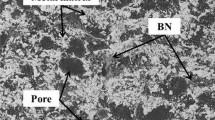Abstract
Tantalum is widely used in capacitor field in modern times. The tantalum shell of capacitor is usually obtained by deep drawing process, and adhesive wear of the shell is the main hidden danger during its deep drawing process. In this paper, ultrasonic vibration–assisted deep drawing technology is proposed to manufacture tantalum capacitor shell, in order to effectively control the adhesive wear of tantalum capacitor with the assistance of ultrasonic vibration energy. Influence of ultrasonic vibration on deep drawing force and surface forming accuracy of tantalum cup deep drawing is discussed by applying different amplitudes of ultrasonic vibration signals at different time periods. The results reveal that in the amplitude range of 3–7 μm, the amplitude of 5 μm has the best inhibition effect on adhesive wear during the deep drawing of tantalum cup, and the effect is especially obvious in the initial stage of the deep drawing process; the reduction of wearing can reach more than 22% comparing with the results without ultrasonic amplitude.














Similar content being viewed by others
Data availability
All data generated or analyzed during this study are included in this published article.
Code availability
There are no codes involved in this article.
References
Mitchell TE, Raffo PL (2011) Mechanical properties of some tantalum alloys[J]. Can J Phys 45(2):1047–1062
Robin A, Gomes EA, Nunes CA, Coelho GC, Baldan CA (2012) Preparation and characterization of Zircaloy 4-Tantalum alloys for application in corrosive media[J]. Int J Refract Metal Hard Mater 35(11):90–95
Nemat-Nasser S, Kapoor R (2001) Deformation behavior of tantalum and a tantalum tungsten alloy[J]. Int J Plast 17(10):1351–1366
Buckman RW (2000) New applications for tantalum and tantalum alloys[J]. JOM 52(3):40–41
Prokhorova T, Orlov V, Miroshnichenko M (2014) Effect of tantalum capacitor powder preparation conditions on the dielectric loss tangent of anodes[J]. Inorg Mater 50(2):145–149
Kardan M, Parvizi A, Askari A (2018) Influence of process parameters on residual stresses in deep-drawing process with FEM and experimental evaluations[J]. J Braz Soc Mech Sci Eng 40(3):157–169
Blaha F, Langenecker B (1955) Elongation of zinc monocrystals under ultrasonic action. Naturwissenschaften 42:556
Liu YX, Suslov S, Han QY, Xu C, Hua L (2011) Microstructure of the pure copper produced by upsetting with ultrasonic vibration[J]. Mater Lett 67(1):52–55
Siegert K, Mock A (1996) Wire drawing with ultrasonically oscillating dies[J]. J Mater Process Technol 60:657–660
Rozner AG (1971) Effect of ultrasonic vibration on coefficient of friction during strip drawing[J]. J Acoust Soc Am 49(5A):1368–2371
Jimma T, Kasuga Y, Iwaki N, Miyazawa O, Mori E, Ito K, Hatano H (1998) An application of ultrasonic vibration to the deep drawing process. J Mater Process T echnol 80:406–412
Eaves A, Smith A, Waterhouse W, Sansome D (1975) Review of the application of ultrasonic vibrations to deforming metals. Ultrasonics 13(4):162–170
Pasierb A, Wojnar A (1992) An experimental investigation of deep drawing and drawing process of thin-walled products with utilization of ultrasonic vibrations. J Mater Process Tech 34:489–494
Meng DA, Zhu CC, Zhao XZ, Zhao SD (2018) Applying low-frequency vibration for the experimental investigation of clutch hub forming.[J]. Materials (Basel, Switzerland) 11(6)
Ashida Y, Aoyama H (2007) Press forming using ultrasonic vibration [J]. J Mater Process Technol 187–188:118–122
Luo F, Wang B, Li ZW, Wu XY, Gong F, Peng TJ, Li KH (2017) Time factors and optimal process parameters for ultrasonic microchannel formation in thin sheet metals. Int J Adv Manuf T echnol 89:255–263
Cao MY, Li JC, Yuan YN, Zhao CC (2017) Flexible die drawing of magnesium alloy sheet by superimposing ultrasonic vibration [J]. Trans Nonferrous Metals Soc China 27(01):163–171
Bunget C, Ngaile G (2011) Influence of ultrasonic vibration on micro-extrusion [J]. Ultrasonics 51(5):606–616
Funding
The work described in this paper was supported by the grants from the National Natural Science Foundation of China (Grant NO. 52005341) and National Taipei University of Technology-Shenzhen University Joint Research Program (Project NO. 2023010).
Author information
Authors and Affiliations
Contributions
All authors have contributed to the creation of this manuscript for important intellectual content and approved the final manuscript. Xu Teng: methodology; data curation; experiment; validation; formal analysis; writing, original draft, review, and editing. Dai Zhicong: supervision; writing, review, and provide method. Huang Jianbin, Dou Shihao: supervise and guide. Ran Jiaqi, Gong Feng: experiment and analyze the data, review, and editing.
Corresponding authors
Ethics declarations
Ethics approval
There are no ethical issues involved in this article.
Consent to participate
All authors agree to participate in the writing of this paper.
Consent for publication
All authors agree to the publication of this paper.
Conflict of interest
The authors declare no competing interests.
Disclaimer
The manuscript has not been published before and is not being considered for publication elsewhere.
Additional information
Publisher's note
Springer Nature remains neutral with regard to jurisdictional claims in published maps and institutional affiliations.
Rights and permissions
Springer Nature or its licensor (e.g. a society or other partner) holds exclusive rights to this article under a publishing agreement with the author(s) or other rightsholder(s); author self-archiving of the accepted manuscript version of this article is solely governed by the terms of such publishing agreement and applicable law.
About this article
Cite this article
Xu, T., Dai, Z., Huang, J. et al. Inhibition of adhesive wear in tantalum cup deep drawing by ultrasonic vibration–assisted forming technology. Int J Adv Manuf Technol 125, 4353–4361 (2023). https://doi.org/10.1007/s00170-023-11020-0
Received:
Accepted:
Published:
Issue Date:
DOI: https://doi.org/10.1007/s00170-023-11020-0




